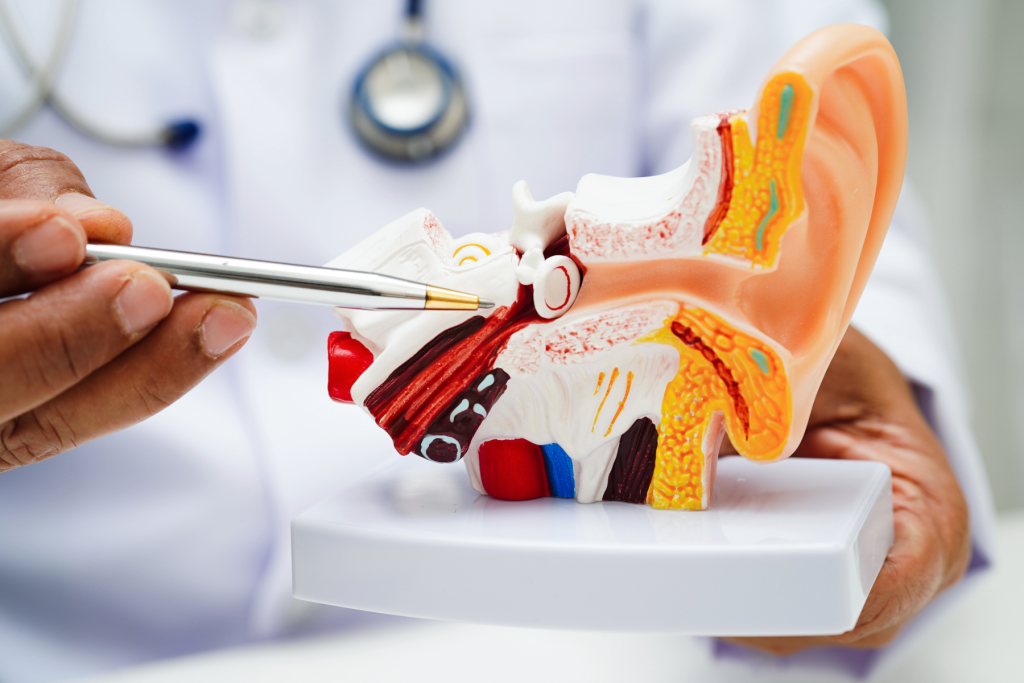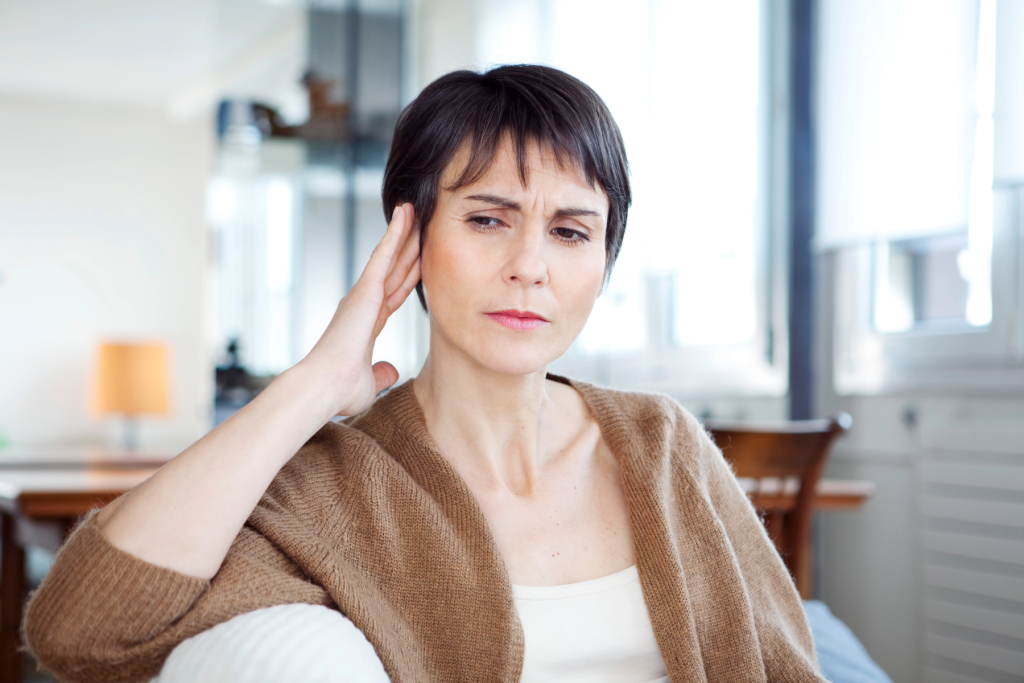


Tinnitus Evaluations
Tinnitus is a sensory phenomenon characterized by the perception of noise in the ears, which can manifest as ringing, buzzing, clicking, roaring, or hissing sounds. While not typically indicative of a serious medical condition, tinnitus can significantly impact a patient’s quality of life due to its intrusive nature. It is considered a symptom that can arise from various underlying conditions, including issues with the inner or middle ear.
Common causes of tinnitus include exposure to loud noise, otosclerosis (abnormal bone growth in the ear), damage to the hair cells of the inner ear, circulatory system disorders, ear injuries, excessive wax buildup in the ear, neurological dysfunction, or age-related hearing loss.
Tinnitus Testing
Tinnitus is diagnosed through tests including a physical examination and an audiological examination. During the physical examination, the abnormal noises that characterize tinnitus can be heard through a stethoscope or ear tube by the doctor. A proper diagnosis must be made, not only so that the tinnitus can be treated successfully, but so that any serious underlying condition can be addressed as well.
Tinnitus Treatment
Most individuals with tinnitus can be effectively treated, with the main focus on improving the patient’s hearing. Treatments typically include wearing hearing aids, managing ear wax build-up, and use of sound therapy, such as devices that produce either white, pink, green, indigo, brown noise, or fractal tones—which help mask the phantom noises associated with tinnitus and allow patients to habituate and learn to tune out the sounds. However, hearing aids are not always a cure for tinnitus, as the limbic system may be involved, and amplification alone may not always be sufficient to mask tinnitus.
Reconnect with the sounds that matter most.
Contact us to get started on your hearing care journey.


Tinnitus Evaluations
Tinnitus is a sensory phenomenon characterized by the perception of noise in the ears, which can manifest as ringing, buzzing, clicking, roaring, or hissing sounds. While not typically indicative of a serious medical condition, tinnitus can significantly impact a patient’s quality of life due to its intrusive nature. It is considered a symptom that can arise from various underlying conditions, including issues with the inner or middle ear.
Common causes of tinnitus include exposure to loud noise, otosclerosis (abnormal bone growth in the ear), damage to the hair cells of the inner ear, circulatory system disorders, ear injuries, excessive wax buildup in the ear, neurological dysfunction, or age-related hearing loss.
Tinnitus Testing
Tinnitus is diagnosed through tests including a physical examination and an audiological examination. During the physical examination, the abnormal noises that characterize tinnitus can be heard through a stethoscope or ear tube by the doctor. A proper diagnosis must be made, not only so that the tinnitus can be treated successfully, but so that any serious underlying condition can be addressed as well.
Tinnitus Treatment
Most individuals with tinnitus can be effectively treated, with the main focus on improving the patient’s hearing. Treatments typically include wearing hearing aids, managing ear wax build-up, and use of sound therapy, such as devices that produce either white, pink, green, indigo, brown noise, or fractal tones—which help mask the phantom noises associated with tinnitus and allow patients to habituate and learn to tune out the sounds. However, hearing aids are not always a cure for tinnitus, as the limbic system may be involved, and amplification alone may not always be sufficient to mask tinnitus.
Reconnect with the sounds that matter most.
Contact us to get started on your hearing care journey.
Tinnitus Evaluations
Tinnitus is a sensory phenomenon characterized by the perception of noise in the ears, which can manifest as ringing, buzzing, clicking, roaring, or hissing sounds. While not typically indicative of a serious medical condition, tinnitus can significantly impact a patient’s quality of life due to its intrusive nature. It is considered a symptom that can arise from various underlying conditions, including issues with the inner or middle ear.
Common causes of tinnitus include exposure to loud noise, otosclerosis (abnormal bone growth in the ear), damage to the hair cells of the inner ear, circulatory system disorders, ear injuries, excessive wax buildup in the ear, neurological dysfunction, or age-related hearing loss.
Tinnitus Testing
Tinnitus is diagnosed through tests including a physical examination and an audiological examination. During the physical examination, the abnormal noises that characterize tinnitus can be heard through a stethoscope or ear tube by the doctor. A proper diagnosis must be made, not only so that the tinnitus can be treated successfully, but so that any serious underlying condition can be addressed as well.
Tinnitus Treatment
Most individuals with tinnitus can be effectively treated, with the main focus on improving the patient’s hearing. Treatments typically include wearing hearing aids, managing ear wax build-up, and use of sound therapy, such as devices that produce either white, pink, green, indigo, brown noise, or fractal tones—which help mask the phantom noises associated with tinnitus and allow patients to habituate and learn to tune out the sounds. However, hearing aids are not always a cure for tinnitus, as the limbic system may be involved, and amplification alone may not always be sufficient to mask tinnitus.
Reconnect with the sounds that matter most.
Contact us to get started on your hearing care journey.

